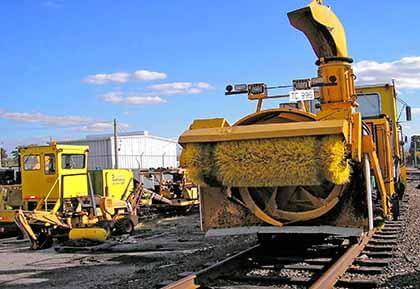By Joe Anuta
After frustrated straphangers criticized the Long Island Rail Road following the Dec. 26 blizzard, the MTA has announced it will institute an emergency service plan whenever extreme conditions arise in order to keep commuters better informed about service changes.
The schedule is expected to be ready within the next few weeks and will attempt to inform commuters about how the railroad will resuscitate itself after a full or partial shutdown.
“It is an effort by the railroad to give its customers some advance idea of what they could expect in terms of service when the railroad is coming back from a major shutdown or cancellation of service,” said Sal Arena, a spokesman for the LIRR.
The LIRR already implements several methods of keeping passengers informed, according to Arena. One way is via e-mail, where the railroad sends out specific messages regarding each line. It currently has about 30,000 subscribers.
“They are the closest thing to real time,” Arena said.
The website also has current information, he said, along with the automated signs at the train stations.
But the emergency schedule is another attempt to inform travelers about service changes.
“Invariably, somebody is not getting the message. Someone is not hearing it through all those avenues,” Arena said. “This is an attempt to cover another base.”
Arena said the schedule is still in the planning stages and he was unsure whether it would simply go up on the website or be printed like holiday and weekend schedules.
But one of the keys to determining service is understanding how the LIRR comes back after a total shutdown — like what happened after the Dec. 26 blizzard.
If tracks are covered in snow, which could impede the current of electricity that flows from the third rail to the train cars, then the LIRR must rely on its diesel trains, which constitute about 20 percent of its stock, according to Arena.
Since that 20 percent cannot service the entire network of track, the busiest lines are given priority.
Those lines are the Port Washington, Babylon, Ronkonkoma and Huntington branches, according to Arena.
Arena said that if straphangers were in dire need of transportation, they could try and plan an alternate route using one of the larger branches.
But the emergency schedule will not be an exact science.
“You can’t predict every possible outcome,” Arena said.
As an example, if a winter storm were confined to the north branches, then the service would not be affected in the same way as in the aftermath of the Dec. 26 blizzard.
“It’s an attempt to give people an idea how the railroad plans to restore service,” Arena said.
Reach reporter Joe Anuta by e-mail at januta@cnglocal.com or by phone at 718-260-4566.



































